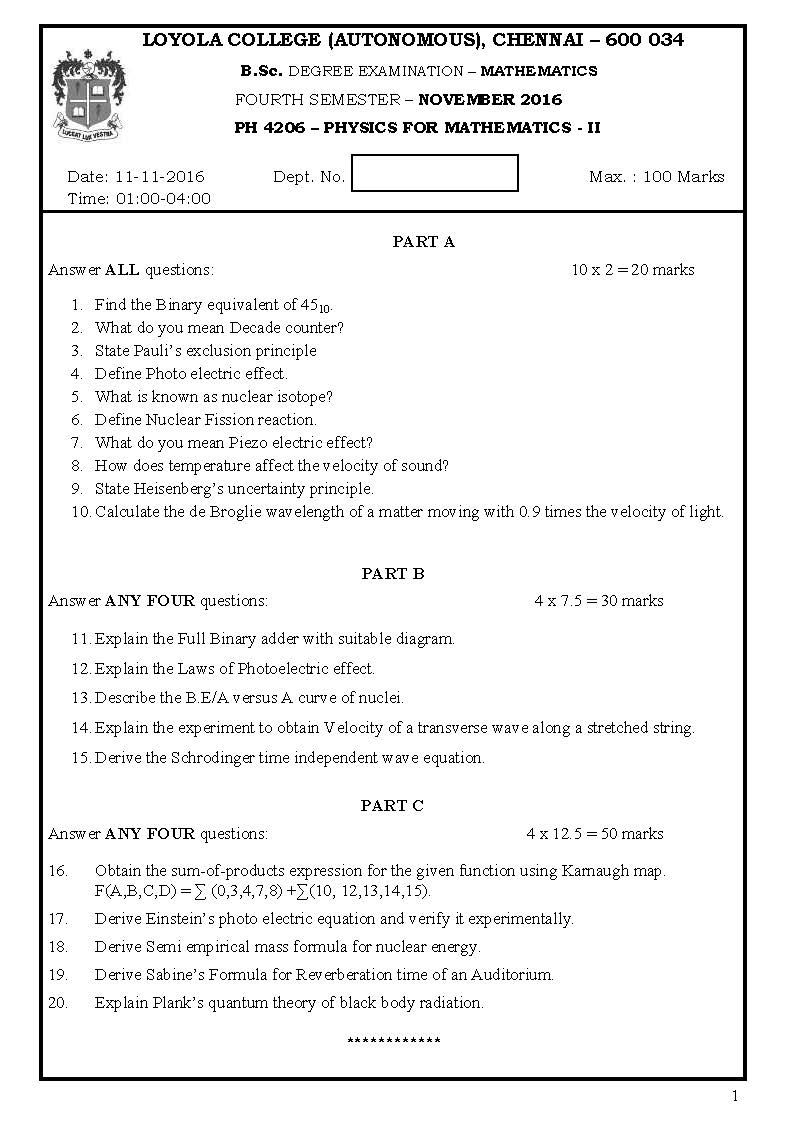LOYOLA COLLEGE (AUTONOMOUS), CHENNAI – 600 034
B.Sc. DEGREE EXAMINATION – PHYSICS
FOURTH SEMESTER – APRIL 2012
PH 4206/4200 – PHYSICS FOR MATHEMATICS – II
Date : 19-04-2012 Dept. No. Max. : 100 Marks
Time : 1:00 – 4:00
PART – A
Answer ALL questions (10×2=20)
- Convert (35.676)2 to its hexadecimal equivalent.
- State any two laws of Boolean Algebra.
- Give any two industrial applications of X rays.
- What are isotones? Give examples.
- What are fundamental interactions?
- What is the significance of BE/A curve?
- Give the conditions for good acoustical design of rooms.
- Give reasons for failure of Classical Mechanics.
- State Wein’s displacement law.
- Calculate the de Broglie wavelength of an electron having K.E of 1eV.
PART – B
Answer any FOUR questions (4×7.5 = 30)
- Explain the effect of pressure, temperature, density and humidity on velocity of sound in gases.
- At what temperature the velocity of sound is twice the value of velocity of sound at 0° C?
- Describe Davisson and Germer experiment for the study of electron diffraction.
- What are elementary particles? How are they classified?
- How are X rays produced? Differentiate continuous X ray spectra with characteristic X ray spectra.
- Explain the working of a RS and JK flip flop with their truth tables.
PART – C
Answer any FOUR questions (4×12.5 =50)
- Explain the description and working of a decade counter with its truth table.
- State Bohr’s postulates. Explain the Bohr’s atom model in the case of hydrogen atom and derive an expression for the radius of the nth orbit.
18 a. Explain in detail the liquid drop model for a nucleus. (8)
- The experimentally measured mass of π meson is 140MeV/c2. Estimate the range of nuclear force. (4.5)
- Define reverberation time. Derive an expression for Sabine’s reverberation formula.
- Derive the time-independent Schrodinger equation. Comment on the physical interpretation of the wave function.

